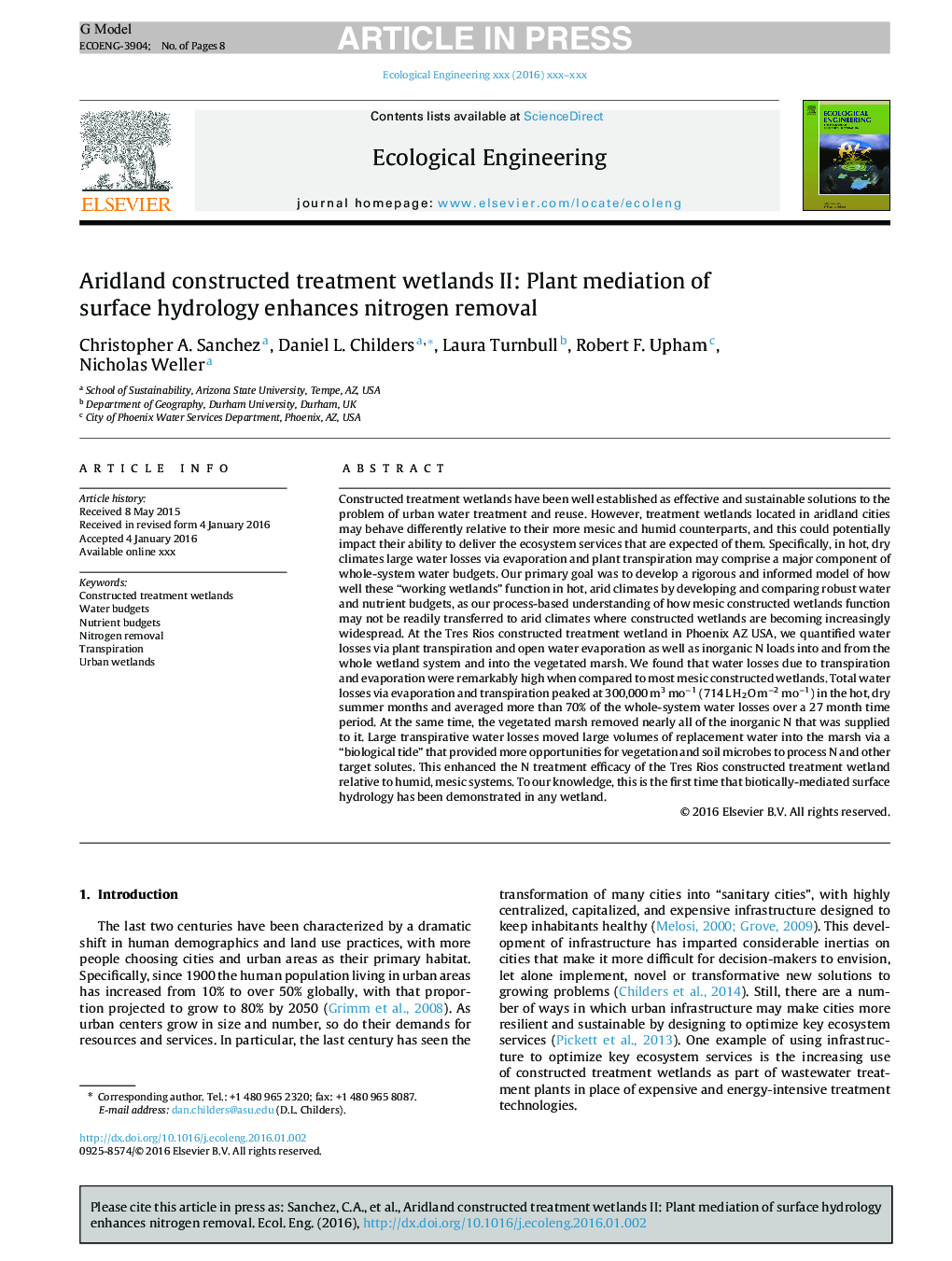| کد مقاله | کد نشریه | سال انتشار | مقاله انگلیسی | نسخه تمام متن |
|---|---|---|---|---|
| 8848255 | 1618002 | 2016 | 8 صفحه PDF | دانلود رایگان |
عنوان انگلیسی مقاله ISI
Aridland constructed treatment wetlands II: Plant mediation of surface hydrology enhances nitrogen removal
دانلود مقاله + سفارش ترجمه
دانلود مقاله ISI انگلیسی
رایگان برای ایرانیان
کلمات کلیدی
موضوعات مرتبط
علوم زیستی و بیوفناوری
علوم کشاورزی و بیولوژیک
بوم شناسی، تکامل، رفتار و سامانه شناسی
پیش نمایش صفحه اول مقاله

چکیده انگلیسی
Constructed treatment wetlands have been well established as effective and sustainable solutions to the problem of urban water treatment and reuse. However, treatment wetlands located in aridland cities may behave differently relative to their more mesic and humid counterparts, and this could potentially impact their ability to deliver the ecosystem services that are expected of them. Specifically, in hot, dry climates large water losses via evaporation and plant transpiration may comprise a major component of whole-system water budgets. Our primary goal was to develop a rigorous and informed model of how well these “working wetlands” function in hot, arid climates by developing and comparing robust water and nutrient budgets, as our process-based understanding of how mesic constructed wetlands function may not be readily transferred to arid climates where constructed wetlands are becoming increasingly widespread. At the Tres Rios constructed treatment wetland in Phoenix AZ USA, we quantified water losses via plant transpiration and open water evaporation as well as inorganic N loads into and from the whole wetland system and into the vegetated marsh. We found that water losses due to transpiration and evaporation were remarkably high when compared to most mesic constructed wetlands. Total water losses via evaporation and transpiration peaked at 300,000Â m3Â moâ1 (714Â LÂ H2OÂ mâ2Â moâ1) in the hot, dry summer months and averaged more than 70% of the whole-system water losses over a 27 month time period. At the same time, the vegetated marsh removed nearly all of the inorganic N that was supplied to it. Large transpirative water losses moved large volumes of replacement water into the marsh via a “biological tide” that provided more opportunities for vegetation and soil microbes to process N and other target solutes. This enhanced the N treatment efficacy of the Tres Rios constructed treatment wetland relative to humid, mesic systems. To our knowledge, this is the first time that biotically-mediated surface hydrology has been demonstrated in any wetland.
ناشر
Database: Elsevier - ScienceDirect (ساینس دایرکت)
Journal: Ecological Engineering - Volume 97, December 2016, Pages 658-665
Journal: Ecological Engineering - Volume 97, December 2016, Pages 658-665
نویسندگان
Christopher A. Sanchez, Daniel L. Childers, Laura Turnbull, Robert F. Upham, Nicholas Weller,